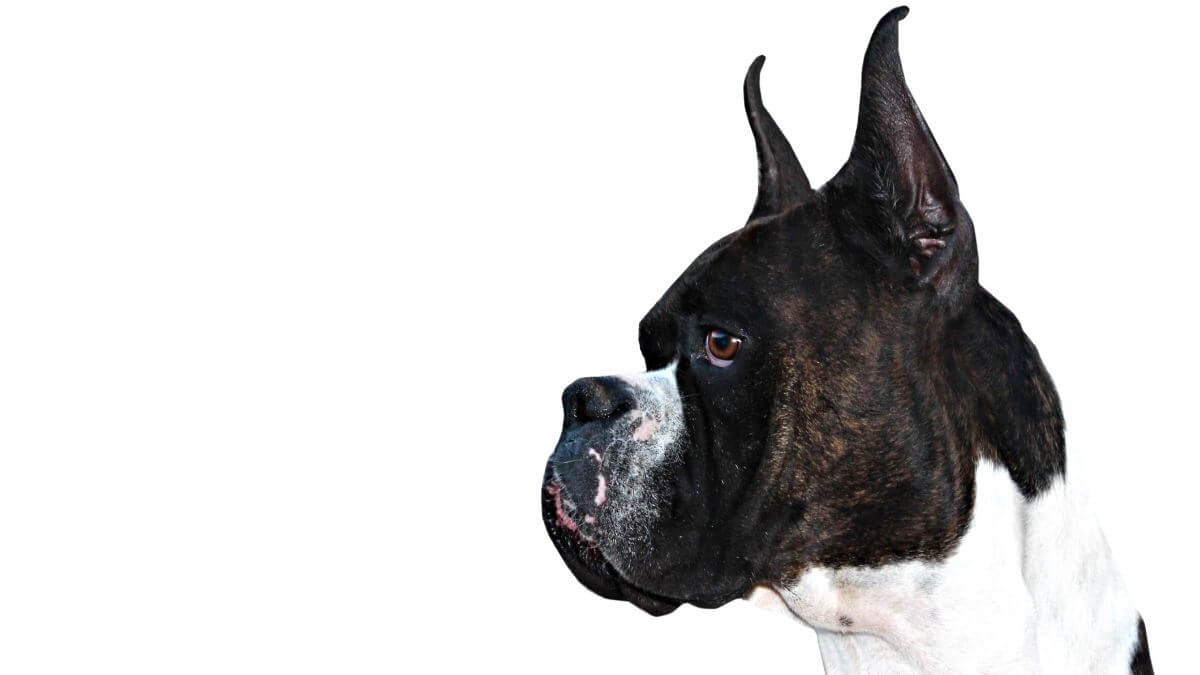


Home » Appreciating Universal Boxer Type

This article was originally published in Showsight Magazine, May 2013 issue.
Why is it that some breeds have a ‘Universal Type’ that appears basically the same throughout the world, while other breeds, like Boxers, are phenotypically different depending on the region in which they are bred? For years, I have tried to understand this very challenging concept as it relates to the Boxer breed, which I dedicate myself to bettering. I’m afraid to say that the answer may lie in the number of people actively breeding Boxers who seem to have little understanding or interest in learning what makes a good Boxer, per the breed standard in any region worldwide.
While there are some minor differences in each region’s interpretation of their Boxer standard, the standards are all fundamentally similar in their description of the breed. So why do Boxers from different parts of the world look so different from what we typically see at local shows? It seems rather awkward for a conformation judge to encounter so much variety in breed type at a large specialty show or national event. In many cases, the variety seen in the classes of our American Boxer national specialty gives the impression that different breeds are competing amongst ‘our Boxers.’
This original question of Universal Type in Boxers is what I would like to discuss, particularly as it relates to all Boxer breeders interested in joining efforts to produce dogs of uniform type at a global level. This requires moving beyond sentimental attachment to show careers and addressing the prognosis of the breed, regardless of consistent universal breed likeness.
Realizing that the many active breeders have chosen the Boxer for its different characteristics and for various reasons, I accept that this may be a difficult concept for some to embrace. My early images of Boxers come from a time when I was just learning about the different characteristics of many breeds common then. These are images that stay with me throughout my experience as a breeder. Education from a few senior Boxer ‘specialists’ along the way has also aided me in developing a more thorough understanding of those characteristics most crucial to breed type.
Other breeders must also work with their own early images, but I doubt that any two individuals have the exact same images to draw from as they develop their own proposition of a Boxer. Presumably, these differences—along with varied education in breed history, interpretations of the standard, and sentimentality—combine to create a multitude of breeding decisions that influence the vision and foresight of the breed. These factors all pose a challenge to achieving the goal of Universal Type in Boxers.
At present, this remains a challenge – but it doesn’t hurt to share thoughts on the subject.
Just as there are breeds that have experienced dissent among breeders and parent clubs regarding the purity of type—such as the great Japanese Akita/American Akita debate—it could be reasoned that Boxer breeders and parent clubs may face similar issues in the future. The breed image around the world has become less uniform over time. What constitutes an exemplary Boxer in one country could someday be unaccepted as a Boxer in another, as traits become more exaggerated and breeders focus on the fashion and style prevalent in their corner of the globe.
This is a hypothetical situation, but not entirely far-fetched when you consider how breeding trends can affect the form and functionality of individuals within a breed and the breed as a whole. If you’ve followed the discussion so far, you might be ready to grasp the significance of this proposal for Universal Type.
Soon enough, in the “Home of the Free,” Boxer exhibitors will likely face the imposition of a ban on ear cropping and tail docking, including in the conformation arena. It isn’t difficult to imagine how Boxers might then be judged using a more cosmopolitan scope of criteria. They could also derive the benefit of moving more freely between countries that already enforce such legislation. Considering that all breeders would be made to comply with crop/dock bans through legal enforcement and kennel club regulations, now may well be the best time to introduce the idea of a Universal Boxer.
The impression of a cropped/docked Boxer will someday become a thing of the past. If you can envision Boxers from your breeding program—or even those from a peer breeder’s kennel—competing successfully in Europe, Asia, Australia, South America, and beyond, then you might be ready for the task ahead.
Achieving this goal would not be effortless. It would require considerable attention to detail in quality control. The primary focus would need to be on the characteristics that all Boxers share worldwide and those that set them apart. To realize this Universal Type concept, we would gravitate toward moderation, balance, and a middle ground that satisfies breeders globally.
This shared vision would allow Boxers to be appreciated universally, enlarging the gene pool exponentially and likely improving the overall health and diversity of the breed.
There are many benefits to this gravitation towards universal type, but probably the most significant, in my opinion, would be the “gifts” of health and breed vigor. Following this is the ability to integrate foreign lines with minimal risk of deviation in the first generation.
It is commonly accepted by Boxer fanciers, having observed the cross of North American types with those of foreign types, that the first generations are often much different than either of their parents. In fact, they often encounter difficulty being accepted as dogs of outcrossed type. That generation, when bred back to one side or the other, generally produces renovated versions of the linebred part of their pedigree, due to the hybrid vigor that comes with the introduction of the outside line’s genetic contribution.
This observation comes from firsthand experience in introducing an unrelated dog of a certain “heritage,” finding the first generation to produce dogs of quality, though with types that are somewhat awkward to categorize. Then, using the result of that outcross breeding back to the more familiar line of comparable quality often reveals numerous individuals that appear to possess quality exceeding that of both parents.
If there were more universal type stud offerings conveniently available, it could provide more opportunities for the first generation, instead of the limbo encountered while waiting for that generation to be committed back to one side or the other.
Please consider that there is much potential to remedy the deviant characteristics of noteworthy-caliber Boxers in any region through the careful (keyword) exchange of other quality examples with distant comrades united in improving the Boxer breed. For instance:
Breeders abroad producing Boxers of much “cobbier” or stocky type, with heavy fronts (deep-chested with short upper and lower arms, tight angles, and bunchy musculation) and strong but somewhat straight, imbalanced rears, could likely make use of some worthy North American lines. These lines, with their better proportioning and overall balance, can add a bit of elegance of posture and gracefulness of movement.
Some breeders concentrating on mostly North American lines could benefit from utilizing Boxers from Europe, the UK, and Australia. These lines offer strength and substance to spare, which provide their dogs a chance at becoming functional animals rather than couch or yard ornaments. Additionally, their thoughtful working drive and disposition can be an asset to lines weaker in temperament, as noted in some imports.
Northern and Southern European breeders, with their pedigrees tighter in working dog lines, offer intelligence and trainability (through a desire to please their humans) to many breeders in need of that influence. This virtue of intelligence lends a new heir to the regal, noble bearing that is a fundamental factor in evaluating a Boxer’s merit.
Breeders from all regions can find benefits from blending Boxers with superior head forms, as it pertains to the various standards distinguishing the details of the perfect Boxer head. Few head types in Boxers come without deficiencies, and carefully intermingling those types, with the express intention of reinvigorating distinct features worldwide, offers great promise. Clearly, the details of this thought are for a much greater body of work than what I’ve outlined here, but it is certainly worth mentioning. Perhaps my next challenge will be to prepare a study on the many different head types and their significant virtues as well as their departures from a recognizable worldwide Boxer type.
In summary, though my opinions have clearly taken shape with influences from my personal chronicles in Boxer history, it is my wish that Boxer breeders around the world comprehend my foresight into the future of a breed so dear to my soul. I hope they welcome the idea of a Universal Boxer Type as a focus for discussion.